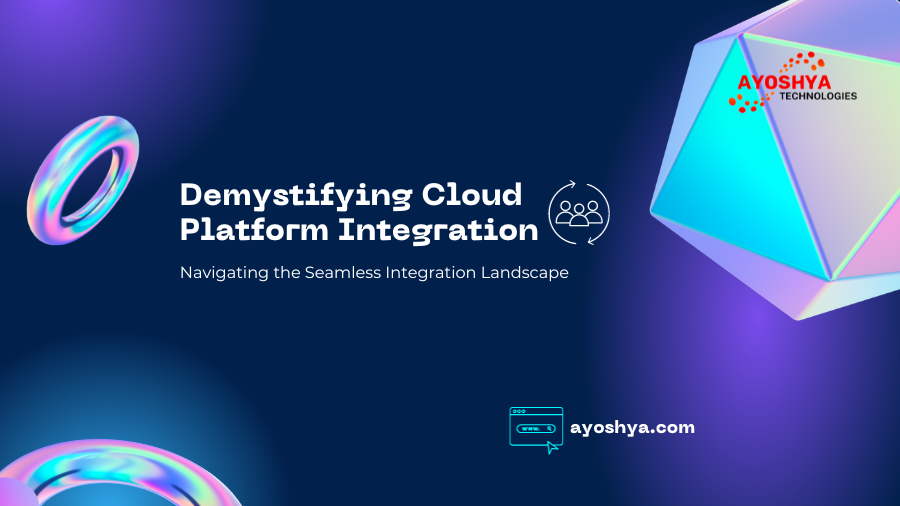Demystifying Cloud Platform Integration: Navigating the Seamless Integration Landscape
In the ever-evolving digital landscape, businesses are increasingly relying on cloud solutions to streamline operations and foster innovation. One critical aspect that emerges in this journey is Cloud Platform Integration. In this article, we’ll unravel the intricacies of cloud integration, exploring its benefits, challenges, strategies for success, and the future trends that promise to reshape the integration landscape.
Understanding Cloud Platform Integration
What is Cloud Platform Integration?
Cloud Platform Integration is the process of connecting different cloud-based and on-premise systems to ensure seamless data flow and communication. It acts as a bridge, allowing organizations to integrate various applications and services in a unified ecosystem.
Key Components and Features
The core components of Cloud Platform Integration include connectors, middleware, and integration tools. These components work together to enable the smooth exchange of data between disparate systems. Features like real-time data synchronization and automation enhance the efficiency of integration.
Benefits of Cloud Platform Integration
Seamless Data Flow Across Systems
Cloud Platform Integration facilitates the exchange of data in real-time, ensuring that information flows seamlessly between various applications. This leads to enhanced collaboration and decision-making.
Enhanced Scalability and Flexibility
Businesses can scale their operations more efficiently with cloud integration. As demands grow, the integration framework adapts, providing the flexibility needed to accommodate changes in data volume and complexity.
Cost-Efficiency and Resource Optimization
Cloud Platform Integration eliminates the need for extensive infrastructure and manual intervention in data exchange processes. This results in cost savings and allows organizations to allocate resources more strategically.
Common Challenges in Cloud Integration
Data Security Concerns
One of the primary concerns in cloud integration is data security. Ensuring that sensitive information remains protected during the integration process is crucial. Robust encryption and authentication mechanisms are essential.
Integration Complexity
As organizations adopt multiple cloud services, the complexity of integration increases. Coordinating data flows between different systems and ensuring compatibility can be challenging.
Ensuring Data Consistency
Maintaining data consistency across integrated systems is vital. Inconsistencies can lead to errors and misinterpretation of information. Establishing data governance policies helps address this challenge.
Strategies for Successful Cloud Platform Integration
Robust Planning and Analysis
Before embarking on cloud integration, organizations should conduct a comprehensive analysis of their existing systems and future requirements. A well-defined integration strategy ensures a smoother implementation process.
Choosing the Right Integration Tools
Selecting the appropriate integration tools based on the specific needs of the organization is critical. Whether it’s ETL (Extract, Transform, Load) tools, iPaaS (Integration Platform as a Service), or custom APIs, the right tools streamline the integration journey.
Collaboration and Communication
Effective communication between IT and business stakeholders is paramount. Collaborative efforts ensure that the integration process aligns with business objectives and meets user expectations.
Real-World Applications and Success Stories
Case Study 1: Streamlining E-commerce Operations
A global e-commerce giant leveraged Cloud Platform Integration to connect its online store, inventory management, and order fulfillment systems. This resulted in a more responsive and efficient e-commerce operation.
Case Study 2: Improving Customer Relationship Management
A leading CRM provider integrated its cloud-based CRM software with various communication channels, providing a unified view of customer interactions. This enhanced customer engagement and satisfaction.
Future Trends in Cloud Integration
Rise of Hybrid Cloud Integration
The integration landscape is moving towards hybrid solutions that combine on-premise and cloud integration. This approach offers greater flexibility and allows organizations to leverage existing infrastructure.
Integration with Emerging Technologies
Cloud integration is evolving to incorporate emerging technologies such as artificial intelligence and machine learning. These technologies enhance data analytics and decision-making capabilities.
Focus on User Experience
Future developments in cloud integration will prioritize user experience. Intuitive interfaces, proactive error handling, and user-friendly dashboards will be integral to the success of integration solutions.
Conclusion
In conclusion, Cloud Platform Integration is not just a technological necessity; it’s a strategic imperative for businesses aiming for seamless operations and agility. As we navigate the complexities of the digital era, robust cloud integration emerges as a key enabler, connecting systems and fostering innovation.
FAQs
- Is Cloud Platform Integration only for large enterprises?
- No, Platform Integration is scalable and suitable for businesses of all sizes, adapting to the specific needs of each organization.
- How does Cloud Platform Integration impact data security?
- Platform Integration can enhance data security through encryption, authentication, and adherence to best practices in data governance.
- What role does real-time data synchronization play in Platform Integration?
- Real-time data synchronization ensures that information is consistently updated across integrated systems, providing accurate and timely insights.
- Can Platform Integration be implemented incrementally?
- Yes, organizations can adopt a phased approach to Platform Integration, starting with specific use cases and expanding over time.
- What are the future trends in Platform Integration?
- The future trends in Platform Integration include the rise of hybrid solutions, integration with emerging technologies, and a strong focus on enhancing user experience.
You may be interested in:
What are the top challenges faced by SAP consultant
Integration cloud system to HANA Cloud Platform using Cloud Connector



